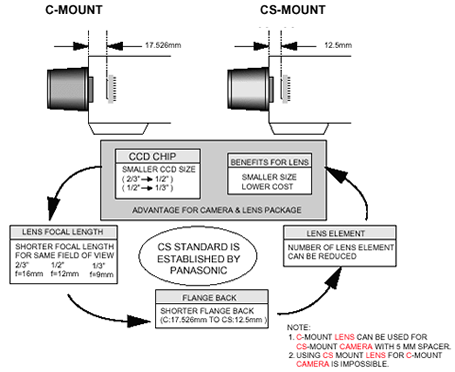
So here we are again covering the application differences between c-mount cameras and cs-mount cameras. Last post we talked about the major differences between the two. We found that cs-mount cameras are more ideal because they can adapt to fit any type of lens without the use of an adapter. Most all c-mount cameras must have an o-ring, that helps provide the focus for a camera. After the birth of the CCTV industry, the mass production of lenses occurred and thus a new model of c-mount camera was born. Now how do you put all these into gear?
C-mount cameras by this picture have a stronger optical focal length in contrast to the chip-set size. This is great because the lens can focus on a shorter distance and thus has greater optical power. The best part is you can have long-distance and still maintain a very wide-angle-of-view. As a result, the c-mount can use smaller chip-sets in combination with the amount of the lens apart from the camera's chip-set. Again the main focus here is the c-mount camera's powerful optical adjustment.
CS-mount cameras by this diagram are simply more efficient in cost and size. The main difference is the distance of the flange between the lens and chip-set. There is less space obviously, but the key difference is that you are not dealing with volatile lens elements. The shorter flange distance allows for a unique and adaptable video shot. Although this is viewed as a disadvantage depending on what you are trying to do. For example, the Holly Effect is a shot where one object stays to scale no matter the mm used to take that shot. This may be needed in a video shot. That is where using a cs-mount lens may not work. So you can clearly see it depends on the application. Depending on what you are trying to do will really dictate what camera is right for you. But we are glad to try and shed light on the key differences between the two mounts.

